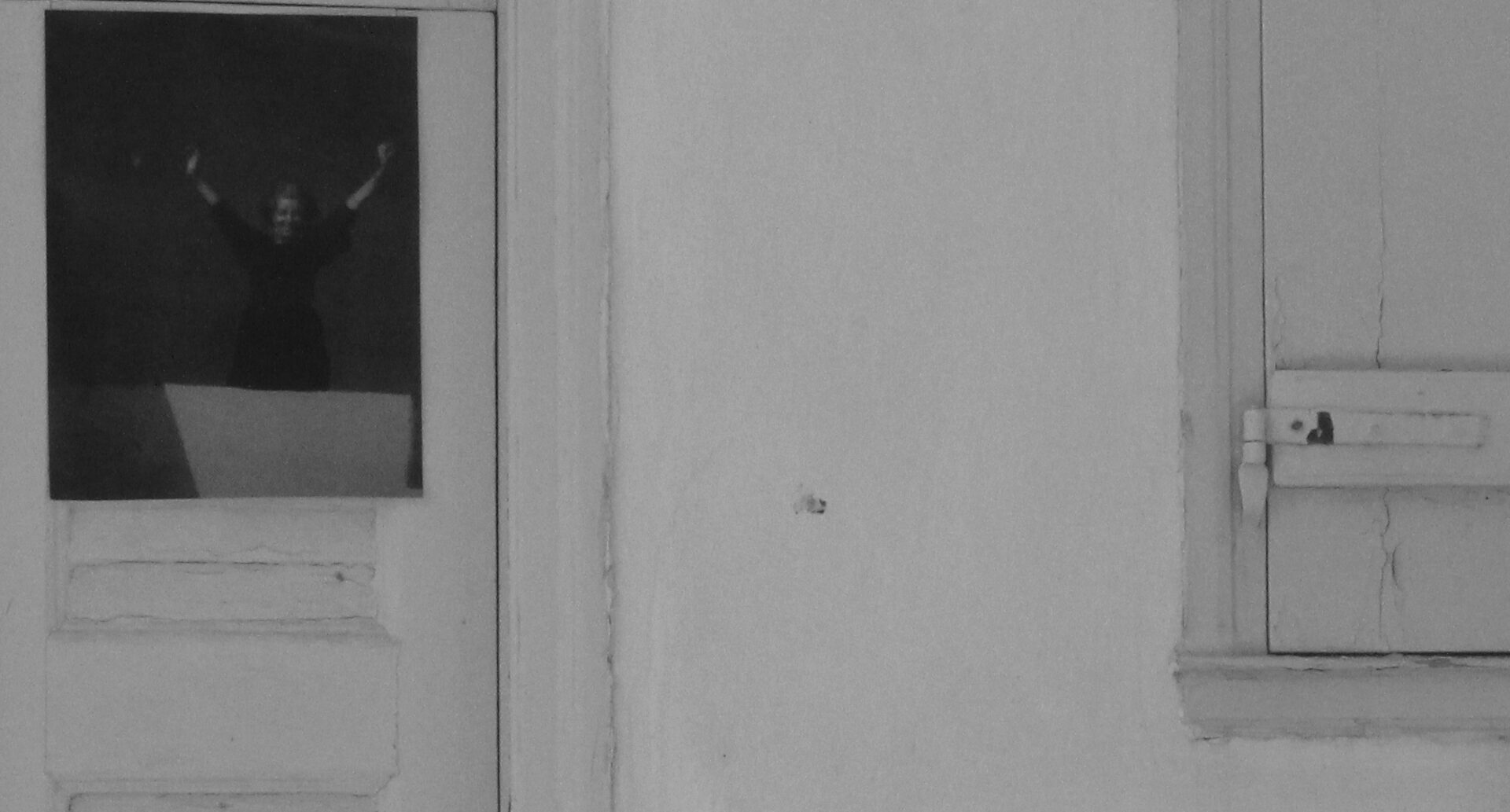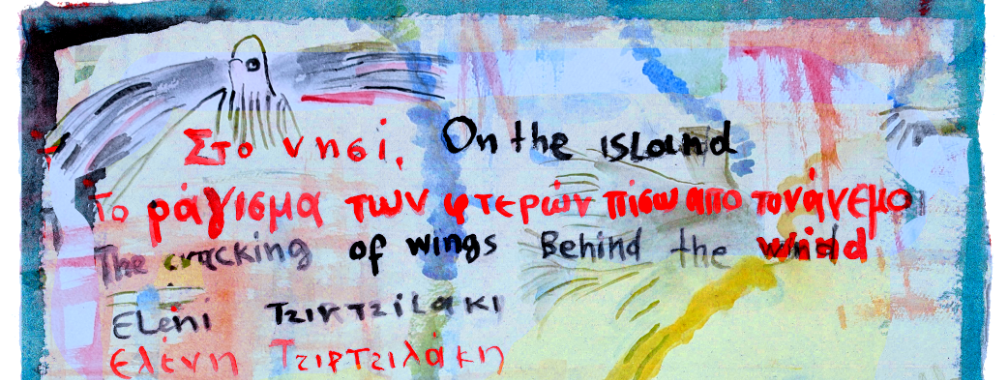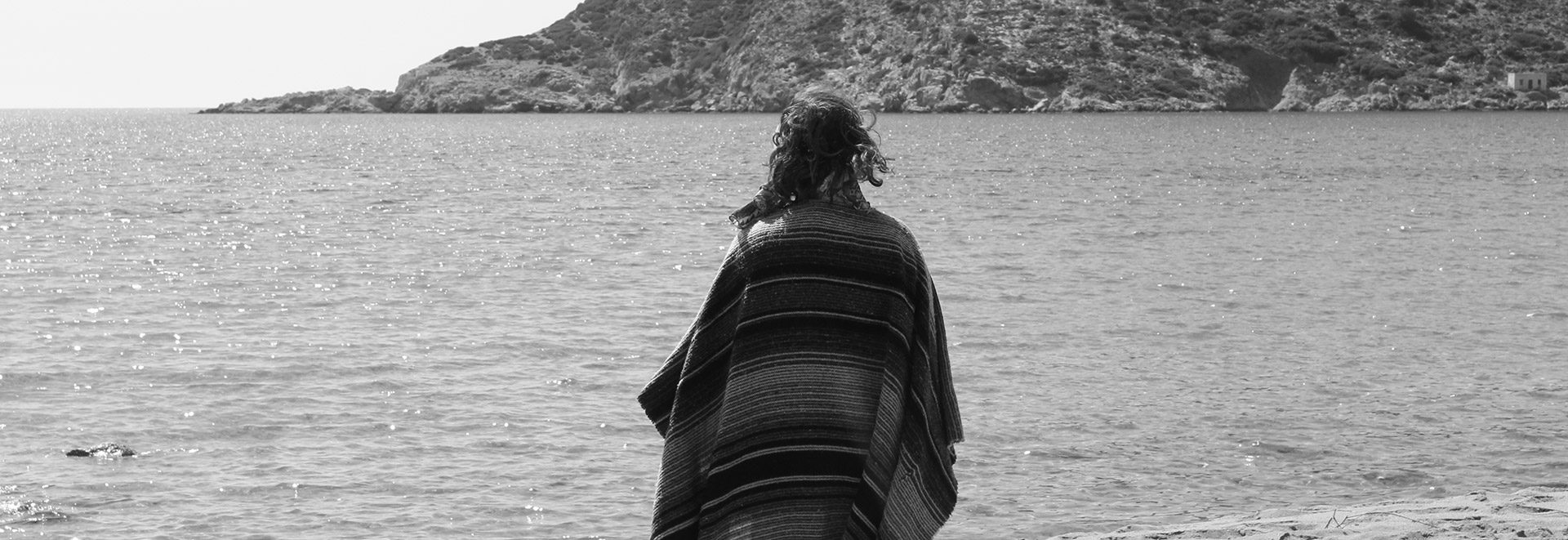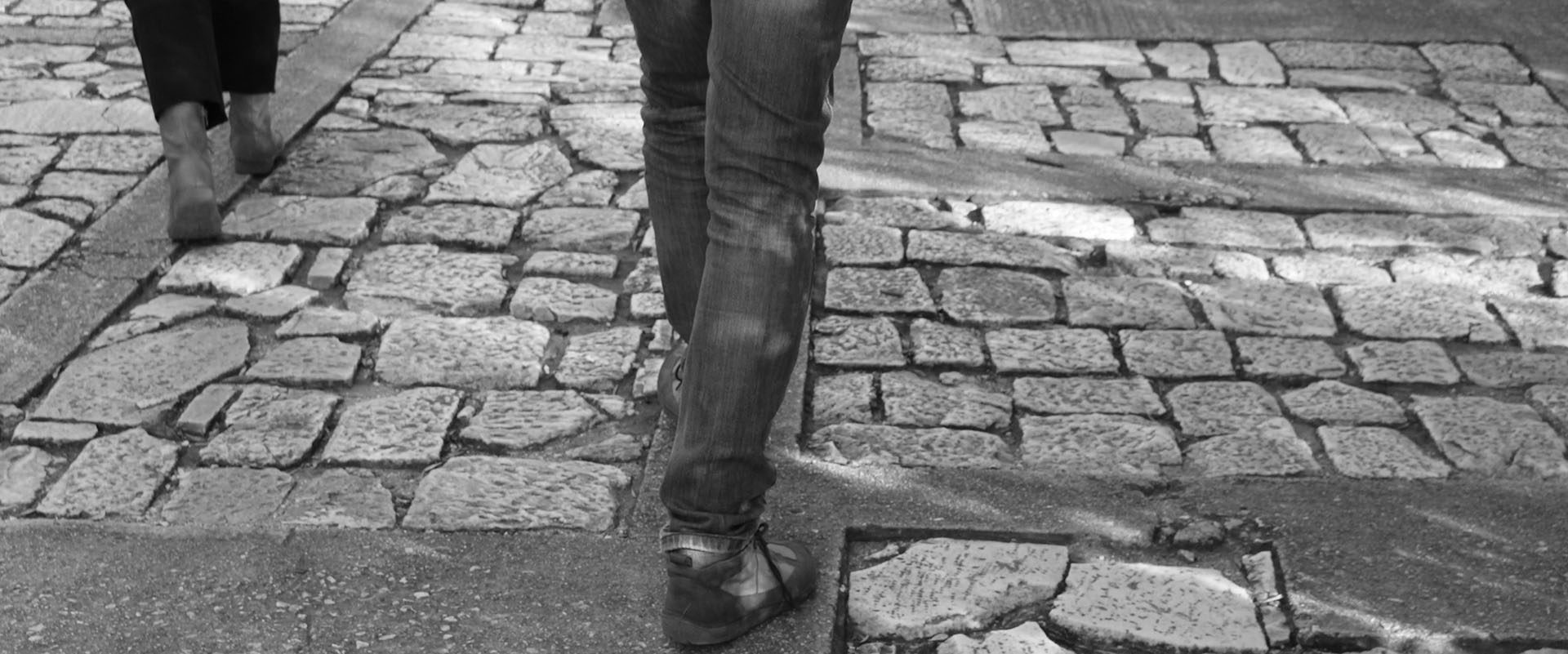Art residency
The sound of water behind the sound of the wind
12 – 27 October 2024, Sifnos
With artists Eleni Tzirtzilaki and Gedske Ramløv and curator Sevie Tsampalla
Upon the invitation of artist-architect Eleni Tzirtzilaki, who resides in Sifnos, artist Gedske Ramløv, who resides in Pergola, Italy, and curator Sevie Tsampalla, who resides in Brussels, Belgium, visited the island to investigate together the water springs, collection and distribution systems that once existed and are still visible on the island’s settlements and beyond. The residency marks an important point in our longer-term study on water, which started with our shared interest in site-specific art and the potential of art to contribute to urgent discussions on water and the need to reimagine our relation to it through care as femininities. Following an intense two week-study on water and its distribution, the art residency “The sound of water behind the sound of the wind” generated a new body of works, including texts, poems, paintings, diaries, video’s, and concluded with two site specific interventions by Eleni Tzirtzilaki and Gedske Ramløv.
During our time in Sifnos we engaged with different sites, explored walking as artistic practice and relations with the water through stories that the inhabitants shared with us on those sites. The synthesis of our group meant a varied relation to the island: Eleni has been living on the island for more than two decades, Sevie was visiting for a second time and Gedske for the first time. Eleni brought us in touch with the land and the water structures and connected us with women who continue having strong bonds with water (as women did in the past too), as well as men ceramicists or farmers on the island whose work depends on water. We walked along the central path of Ano Petali, where water was once flowing, Artemonas, Katavati, walking all the way up to Kastro and Poulati. We also visited Herronisos, Hrissopigi and Pharos.
We were interested in the infrastructures and architecture of water which has long been part of a system of water economy and management, such as cisterns in settlements and fields, wells, canals, gutters. We also looked at the use of water in the remaining ceramic ateliers of the island, which once were the drivers of its economy. With the effects of human-caused climate crisis becoming more and more visible on the fragile landscape of the island, water scarcity is a reality brought to a large extent by overtourism and the mismanagement of water it brings, as it encourages excessive drilling and a disproportionate construction of private swimming pools. The problem of water scarcity aggravates every summer, when the population on the island triples. Next to walking together, our methodologies included mapping, drawing, interviewing, field recording, community practices, measuring distances with our bodies, taking imprints of structures, gathering seeds and stones and leaving subtle traces of our presence in the landscape. We looked for water inside wells and tanks. We mapped functional and morphological elements of water collection systems in the architecture of Sifnos.
We learned the rich water-related terminology of the local dialect. New words were added in our daily vocabulary: αύκλα ή αύκλια (afklia: drainpipe), κουτέντο (koutento: furrow or ditch), φλέα (phlea: source), σίγκλα sigkla (water bucket)… Katerina Apostoliadou shared with us many of these words and we also read them at the Sifnian lexicon by Nikolaos Probonas (Χρηστικό σιφνιακό γλωσσάριο, 2019), a book which we saw proudly being displayed at many homes and shops on the island. We listened to the sound of the wind and the sound of the rough sea, we felt that the water is not (only) behind the wind, but also part of the humid air touching our bodies. But foremost, we listened to the sound of absence, of absent water: of dried out rivers and empty cisterns and sources; the absence of water in ceramic ateliers and cisterns that have become part of hotels, restaurants and rooms to let. In such deep listening exercises (inspired by Pauline Oliveros), we were not alone. Our carrier bags – the traditional dourvas bags (ντουρβάδες) of Sifnos, which we got on the island, were filled with stories and testimonies by local residents about the mismanagement of water, the lack of rain, the desalination and drilling, the animals, the earth….
We spoke with residents about water and its importance for everyday life. We spoke with women who every year paint with care the roofs of their house cisterns, with a farmer about water scarcity in relation to the cultivation of the land, with an archaeologist who studies an area near a spring about the timelessness of water management, with a team that is researching water technology on the island, we read material that the Municipality provided us with. A new, non-hierarchical pool of stories emerged through this gathering. The containers may have emptied out, but water remains a strong carrier of stories. Here, Ursula Le Guin’s, The Carrier Bag Theory of Fiction (1986) accompanied our thinking. A feminist attempt to redefine the story as cultural technology, Le Guin emphasises the need to move away from the dominant patriarchal ways of telling stories through the male hero and his weapons, to containers, things that hold something else. In seeing the island as a container of water memories and acting ourselves as gatherers of those stories, our bodies slowly became vessels, recipients of stories that need to be shared and reinterpreted. Astrida Neimanis’ work Bodies of Water (2017) accompanied us with her call to reimagine how our individual human bodies – constituted of approximately 70 per cent water – through our differences, relate to each other and are thoroughly implicated in the planetary hydrocommons. “We are bodies of water”: water flowing from one body to another, from one species to another. We breathe water expelled by others. We sweat, we drink again, in a continuous circulation between bodies.
In an action that was filmed, Eleni brought together her body, water and the old aukla that she had constructed with two ceramicists (the Skandali brothers) for her house. She had once tried to make a new architectural project, to use the aukla without coating on the stone wall, but the strong winter wind threw her away. So now there are the remains of the fragments of that construction. A ritual dance (butoh) with her body and the remains of the aukla was purifying. Gedske realised a small intervention, a preparatory gesture for an artwork that is yet to come, by “wrapping up” the well of Gafias in fabric. She sat in a small ‘room’ around the well. Young girls once gathered there to fetch water from the well. Her preparatory work is to be part of a mapping of functional devices of the traditional architecture of the island, that reflects the need to collect rainwater and use it for the house. We visited that place the first time with Katerina Apostoliadou and she told us about the once celebrated “Silent water” rite, repeated every year on the 24th of June, St. John’s the Baptist day. On this special occasion, the young girls would carry the water home on the containers (elsewhere, in their mouth) without uttering a word; if not there would be no statements of predictions on their future love affairs, that is who would their future husband be. Again, the motif of the “carrier bag” showed up, but this time not carrying past stories, but the stories that were yet to be told (about the girls’ future). Sevie Tsampalla supported the artists and together with them, conducted research on the island. Collecting stories through interviews, sounds through field recordings and focusing on images that underline the diversity of water containers, her material informs her “Water Diary” and an “Informal study on the container”, which act as research logs that will feed into the next phase of the project.
At the last day of the residency we went to the bridge on the river (Γιοφύρι στην Ποταμιά) and cleaned the dry riverbed together. At the junction between Ano Petali and Artemonas, next to Panagia ta Gournia where women came to wash their handmade carpets (koureloudes), this spot was for us both a literal and a metaphorical confluence of the various energies meeting each other, from personal to collective, from the body to the planetary scale. Two interventions by Eleni and Gedske left subtle traces in the landscape. Eleni’s performance took place in front of Nina Vali-Filippou’s house and paid tribute to her house and the water, the linden trees, the myrtle trees, the wicker baskets that were opposite her home, where Nina often sat and welcomed passers-by. The sounds of the frogs – a vivid memory of Eleni – were crucial for her intervention. Also important were the trees that lived in the riverbed and in the garden opposite Nina’s house. Nina already in the 90s was writing “Ποταμέ σε χάνω. Ποταμέ του γιοφυριού πνίγηκες στο τσιμέντο” (“River, I miss you. River, you drowned in the cement”). Now, even the river frogs that once could be heard and that distracted young girls and boys who run to get water from the nearby well, cannot be heard; they have been silenced. We poured water on the dry trees and placed water messages on the trees, her photograph and a text in the house. In the riverbed, she symbolically searched for the frogs. Then, on the bridge, poems written by Eleni were read about water. Thus, the text “The Tale of the Frogs” was read on the bridge where the frogs tell their lives next to Nina’s house on the riverbed and complain about the lack of water. As neighbours and passers-by gathered with us, we talked about water, we remembered Nina, imagining nymphs that lived in the river. Under the bridge, Gedske intervened in the landscape by retracing with blue stones the furrow that centuries of water flowing has sculpted on the bedrock. A reparative gesture, this was also a measuring act of the passage of time, between the reversibility and irreversibility of water drying out.
The tile of her intervention captures the agony caused by water scarcity and drought: “In a river where water no longer flows – On an island where it has always been scarce – In a world where water will be lacking.” We planned the interventions to fall within hours when the bridge is busier. Passers-by participated and we ended up sitting together in front of Nina’s house discussing the water problem, but also its solutions today. Following these performative interventions, we followed Hanna and Erich, who kindly opened their home to us and showed us their cistern. We consider this to be the start of our project and we are open to continue with other stories and walking. As we are entering the next phase, we are thinking of an event, exhibition and a book that will allow us to include the research material and artworks that emerged and will emerge. The stories we collected, the gathering, our interventions and our relationship with water during our residency showed us that, in Ursula Le Guin’s words, “there are still seeds to be gathered and room in the carrier bag of the stars.”
We would like to express our heartfelt thank you to: Katerina Apostoliadou, Ourania Kalogerou, Maria Loumidi, Yanis Zogkos, George Sahinis, Vangelis, Fabrizio, Claudia, Popi Prokou, Apostolis, Hanna and Erich.
Biographies
Eleni Tzirtzilaki is an architect-artist and poet. She has explored nomadism and displacement, with performative actions-performances in public space, starting with the Urban Void group. As a founding member of Nomadic Architecture, she carries out long-term research in collaboration with communities, with walking actions, mapping and archival research. In recent years, she has been dealing with women’s issues, making projects, painting and writing poems and essays about women. She lives most of the time in Sifnos, in the house-workshop in Taxiarchaki that will host the residency. She has realised various projects on the island, such as “Home as fabric”, “The Letter”, “The Path is never the same”, the “Action and Space” workshop. She was a co-founder at Phlea and is now a member of the Sustainable Cyclades Network. νομαδική αρχιτεκτονική (nomadikiarxitektoniki.net) https://www.femarch.gr/tzirtzilaki/
Gedske Ramløv engages in long-term research that results in context and site specific projects. Foundational in her practice is an interest in how ideological systems arise from the interaction between humans and earth and, in particular, in how the tensions triggered by their interaction shape architectural structures and spatial organisation. Among other, she has realised projects in relation to rural communities influenced by the Communist regime in Romania, the Venetian lagoon, as it is torn between a precarious nature and today’s strong powers, the river Danube as backdrop for the legacy of Nazism in Austria, as well as a project that reflected on the reasons for the endurance of the small republic of San Marino for almost 2000 years. Engaging with water, soil, air and studying natural phenomena, her works become vehicles that carry memories and information by investigating paradigms that testify the ‘metamorphic’ development of a community or a particular geographical area. gedskeramlov.com
Sevie Tsampalla curates exhibitions in public space – most recently Bruges Triennial 2024 Spaces of Possibility, and she is interested in the encounters between contemporary art and practices of commoning. After a decade in the UK and collaborations with Liverpool Biennial, Tate Liverpool and independent venues, she lives and works in Brussels. She often collaborates with artists and has participated in collective initiatives where feminist practices set the tone for renewed relations with public space. She is originally from Kos, an island of the Dodecanese which, since the 1980s, has experienced a radical transformation of its economy from agriculture to mass tourism. She has visited Sifnos as part of her collaboration with Eleni for “Home as Fabric”. Sevie Tsampalla | Databank | Kunstenpunt
The project is supported by a Mobility Fund by Culture Moves Europe
Funded by the Creative Europe Programme of the European Union
Implemented by the Goethe-Institut
With kind support by Seajets














